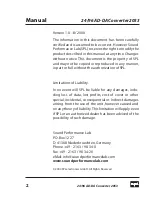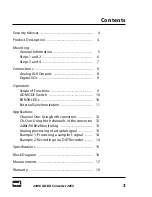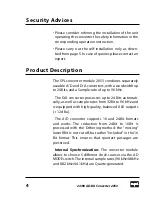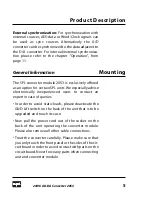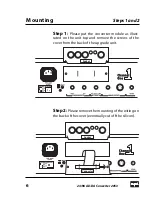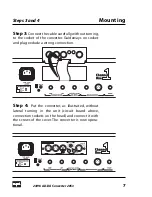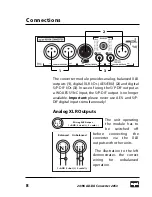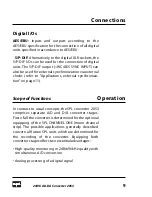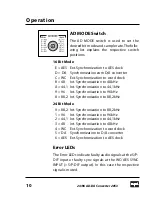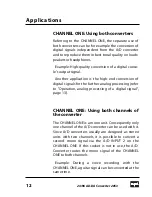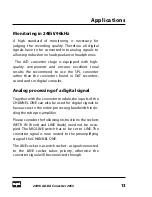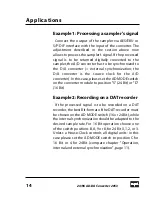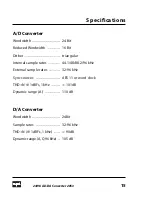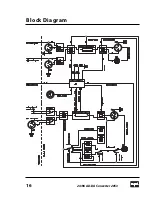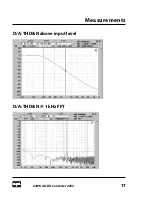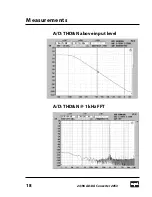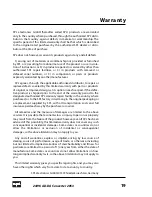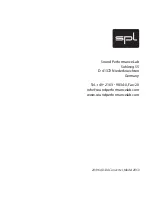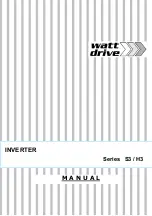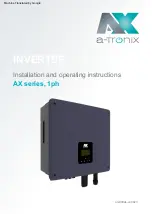
Applications
12
24/96 AD-DA Converter 2053
CHANNEL ONE: Using both converters
Referring to the CHANNEL ONE, the separate use of
both converters can be for example the conversion of
digital signals independent from the A/D converter
and to reproduce them in best tonal quality on louds-
peakers or headphones.
Example: High-quality conversion of a digital conso-
le's output signal.
Another application is the high-end conversion of
digital signals for the further analog processing (refer
to "Operation, analog processing of a digital signal",
page 13).
CHANNEL ONE: Using both channels of
the converter
The CHANNEL ONE is a mono unit. Consequently only
one channel of the A/D converter can be used with it.
Since A/D converters usually are designed as stereo
units with two channels, it is possible to convert a
second mono signal via the A/D INPUT 2 on the
CHANNEL ONE. If this socket is not in use, the A/D-
Converter routes the mono signal of the CHANNEL
ONE to both channels.
Example: During a voice recording with the
CHANNEL ONE, a guitar signal can be converted at the
same time.
Summary of Contents for 2053
Page 1: ...24 96 AD DA Converter Manual Model 2053 ...
Page 16: ...Block Diagram 16 24 96 AD DA Converter 2053 ...
Page 17: ...Measurements 17 24 96 AD DA Converter 2053 D A THD N above input level D A THD N 1 kHz FFT ...
Page 18: ...Measurements 18 24 96 AD DA Converter 2053 A D THD N above input level A D THD N 1 kHz FFT ...


